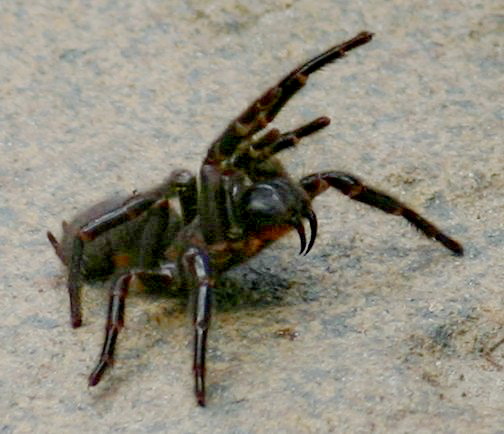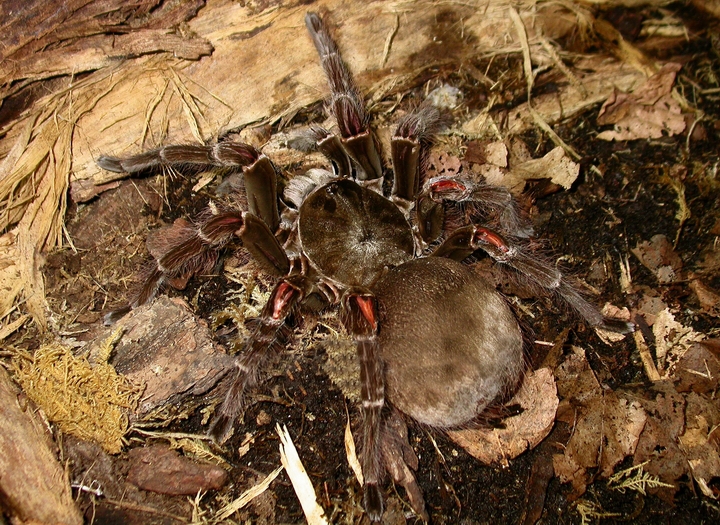While most people acknowledge that spiders perform a valuable service by consuming harmful insects, there remains the lingering belief that the vast majorities are dangerously venomous, and do more harm than good. Today I’d like to pass along some facts and figures that you may find interesting.
Venom
 All spiders produce venom, but in most cases it is only potent enough to overcome the invertebrates upon which they feed. Less than 1% of the world’s 40,000+ spider species are capable of delivering a dangerously venomous bite to humans.
All spiders produce venom, but in most cases it is only potent enough to overcome the invertebrates upon which they feed. Less than 1% of the world’s 40,000+ spider species are capable of delivering a dangerously venomous bite to humans.
The Real Killers
Dogs, horses, pigs and other domestic animals, although enjoying a far more favorable reputation than spiders, actually kill and maim many more people than do our 8-legged neighbors. In fact, far more people are killed yearly in the USA by falling vending machines (I’m guessing in bars?) than by spiders or snakes!
Potentially Deadly Spiders
 The most highly venomous Arachnid, Australia’s funnel-web spider (Atrax robustus), has not caused a fatality since the introduction of antivenin in 1981. In the USA, widows (Latrodectus spp.) and the brown recluse spider (Loxosceles reclusa) are potentially dangerous, but antivenin is available. The bite of the world’s largest spider, South America’s 12-inch goliath bird-eater (Theraphosa blondi), is very painful but otherwise harmless.
The most highly venomous Arachnid, Australia’s funnel-web spider (Atrax robustus), has not caused a fatality since the introduction of antivenin in 1981. In the USA, widows (Latrodectus spp.) and the brown recluse spider (Loxosceles reclusa) are potentially dangerous, but antivenin is available. The bite of the world’s largest spider, South America’s 12-inch goliath bird-eater (Theraphosa blondi), is very painful but otherwise harmless.
Other Spider-Associated Risks
The foregoing should not be taken as a license to ignore caution when dealing with spiders. Just as with bees and other venomous animals, allergic persons can be killed by the bites of relatively benign species, and dangerous infections can be associated with the bite of any animal. Many tarantulas shed urticating hairs when disturbed or even when just moving about. A colleague of mine underwent major surgery to remove such hairs, deposited on his hand by a “tame” red-kneed tarantula, from his eye.
I have kept native and exotic spiders since childhood, and have never been bitten because I do not pick up spiders with my hands. I urge you to handle spiders, if at all, with a plastic tongs or by ushering them into a container.
Further Reading
An excellent resource for those interested in spiders, the American Museum of Natural History’s World Spider Catalog is published at http://research.amnh.org/entomology/spiders/catalog/.
Please see my article Tarantulas in Captivity for information on keeping these fascinating creatures at home.
Funnel Web spider image referenced from Wikipedia and originally posted by Zinnmann
Goliath Bird Eating Spider image referenced from Wikipedia and originally posted by Dcoetzee
 Please see Part 1 of this article for a look at the unique hunting techniques employed by Fishing, Trap Door and other spiders.
Please see Part 1 of this article for a look at the unique hunting techniques employed by Fishing, Trap Door and other spiders. That Reptile Blog – Reptile, Amphibian and Exotic Pet Care and Information
That Reptile Blog – Reptile, Amphibian and Exotic Pet Care and Information


 All spiders produce venom, but in most cases it is only potent enough to overcome the invertebrates upon which they feed. Less than 1% of the world’s 40,000+ spider species are capable of delivering a dangerously venomous bite to humans.
All spiders produce venom, but in most cases it is only potent enough to overcome the invertebrates upon which they feed. Less than 1% of the world’s 40,000+ spider species are capable of delivering a dangerously venomous bite to humans. The most highly venomous Arachnid, Australia’s funnel-web spider (Atrax robustus), has not caused a fatality since the introduction of antivenin in 1981. In the USA, widows (Latrodectus spp.) and the brown recluse spider (Loxosceles reclusa) are potentially dangerous, but antivenin is available. The bite of the world’s largest spider, South America’s 12-inch goliath bird-eater (Theraphosa blondi), is very painful but otherwise harmless.
The most highly venomous Arachnid, Australia’s funnel-web spider (Atrax robustus), has not caused a fatality since the introduction of antivenin in 1981. In the USA, widows (Latrodectus spp.) and the brown recluse spider (Loxosceles reclusa) are potentially dangerous, but antivenin is available. The bite of the world’s largest spider, South America’s 12-inch goliath bird-eater (Theraphosa blondi), is very painful but otherwise harmless.